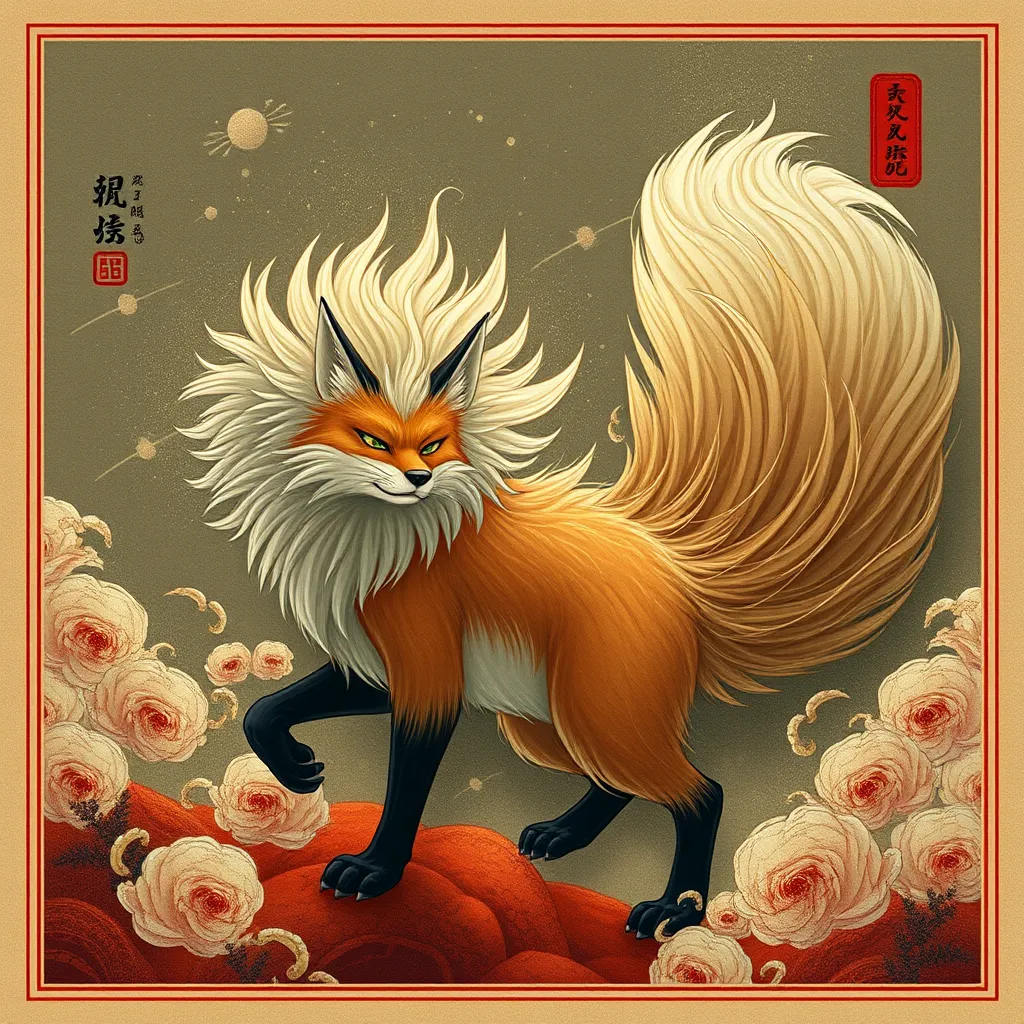The Unseen Hand: Exploring the Lore of the Japanese Yuki-onna
I. Introduction to Yuki-onna
The Yuki-onna, or “Snow Woman,” is a captivating figure in Japanese folklore, embodying the beauty and danger of winter. Known for her ethereal presence and supernatural qualities, she has captured the imagination of many through generations. The Yuki-onna is often depicted as a ghostly woman dressed in white, gliding silently through snowy landscapes. Her significance extends beyond mere storytelling; she serves as a symbol of the complex relationship between humanity and nature, particularly in the context of the harshness of winter.
This article aims to explore the various facets of the Yuki-onna, delving into her historical origins, physical attributes, cultural significance, and her dual nature as both a benevolent and malevolent figure. Through this exploration, we hope to uncover the lessons embedded within her stories and her lasting impact on Japanese culture and beyond.
II. Historical Origins of Yuki-onna
The origins of Yuki-onna can be traced back to ancient Japanese literature and oral traditions. Early references to snow spirits can be found in texts such as the “Nihon Shoki,” Japan’s second oldest historical chronicle, which hints at the spiritual essence of nature and snow. These early mentions laid the groundwork for the emergence of the Yuki-onna as a distinct character.
Over time, the Yuki-onna myth evolved, influenced by various regional beliefs and local legends. In some areas, she is seen as a benevolent spirit who guides travelers through treacherous snowstorms, while in others, she is portrayed as a dangerous entity that preys on unsuspecting men. This evolution reflects the changing perceptions of nature and the human condition throughout Japanese history.
Additionally, regional variations in Yuki-onna stories highlight the diversity of Japanese folklore. For instance, in some regions, she is referred to as “Yukionna,” while in others, she might be associated with different spirits or deities that personify winter and snow.
III. Physical Attributes and Symbolism
The Yuki-onna is often described as a breathtakingly beautiful woman with long black hair and piercing eyes, her skin pale as snow. She typically wears a white kimono, which underscores her connection to winter. Her appearance is not only striking but also carries deep symbolic meanings. The contrast of her beauty against the harshness of winter serves as a reminder of the duality of nature—its ability to both nurture and destroy.
Symbolically, the Yuki-onna represents:
- Transience: Her ephemeral nature reflects the fleeting beauty of snow, which melts away with the warmth of spring.
- Isolation: She embodies the solitude often felt during the long winter months.
- Danger: Her icy demeanor warns of the perils that accompany the beauty of winter.
This connection to winter and nature makes the Yuki-onna a powerful symbol in Japanese culture, representing the delicate balance between life and death, beauty and danger.
IV. Yuki-onna in Folktales and Legends
Yuki-onna features prominently in various folktales and legends, each offering a unique perspective on her character. Notable stories include:
- The Tale of Yuki-onna: A story where a young man encounters the Yuki-onna during a snowstorm and is captivated by her beauty.
- The Snow Woman’s Vengeance: In this tale, a man betrays the Yuki-onna, leading to tragic consequences for him and his family.
Common themes in these tales include:
- The interplay of love and betrayal
- The consequences of one’s actions
- The fragility of life and beauty
The moral lessons embedded in these stories often caution against vanity, highlight the importance of respect for nature, and reflect on the consequences of human actions.
V. The Dual Nature of Yuki-onna: Benevolent vs. Malevolent
The Yuki-onna embodies a duality that makes her character complex and intriguing. On one hand, she is depicted as a protector of travelers, guiding them through snowstorms and offering warmth during the cold. Her benevolent aspects are evident in stories where she saves lost souls or helps those in need, reflecting the nurturing side of nature.
Conversely, there are numerous instances where the Yuki-onna reveals her vengeful and deadly nature. In these tales, she punishes those who disrespect her or betray her trust, often leading to dire consequences. This duality serves to explore the psychological underpinnings of her character, representing the duality of human emotions—love and hate, compassion and vengeance.
VI. Yuki-onna in Modern Culture
In contemporary culture, the Yuki-onna continues to be a popular figure, inspiring various forms of media, including literature, film, and anime. Her character has been reinterpreted in many ways, often blending traditional elements with modern themes. For instance:
- Literature: Authors have incorporated the Yuki-onna into novels, exploring her character in new dimensions.
- Film: Movies like “Yuki-onna” and adaptations of traditional tales have introduced her to wider audiences.
- Anime: The Yuki-onna appears in numerous anime series, often portrayed with a mix of beauty and danger.
The Yuki-onna’s influence extends beyond Japan, contributing to the global fascination with Japanese folklore and mythology. Her character invites exploration into the themes of nature, emotion, and the supernatural.
VII. Cultural Significance and Lessons from Yuki-onna
The Yuki-onna offers rich insights into Japanese cultural values and beliefs. She embodies the reverence for nature, the acknowledgment of its beauty and danger, and the understanding of human emotions. Through her stories, we can observe:
- The importance of harmony with nature
- The recognition of the transient nature of life
- The exploration of complex human emotions
Her narratives resonate with contemporary society, reminding us of the delicate balance we must maintain with our environment and the emotional complexities we face in our lives.
VIII. Conclusion
In conclusion, the Yuki-onna remains a powerful figure in Japanese folklore, representing the intricate relationship between humans and nature. Her impact on culture is profound, influencing literature, art, and contemporary media. As we reflect on her stories and symbolism, we appreciate the enduring legacy of the Yuki-onna and the lessons she imparts.
As we continue to explore the rich tapestry of Japanese mythology, the Yuki-onna serves as a captivating entry point, inviting us to delve deeper into the worlds of folklore, culture, and the human experience.



